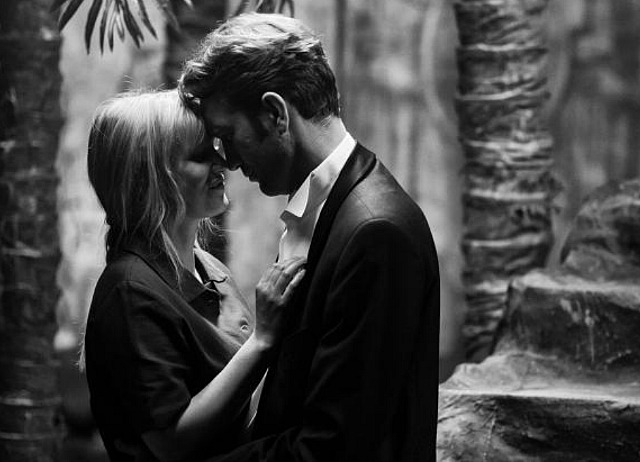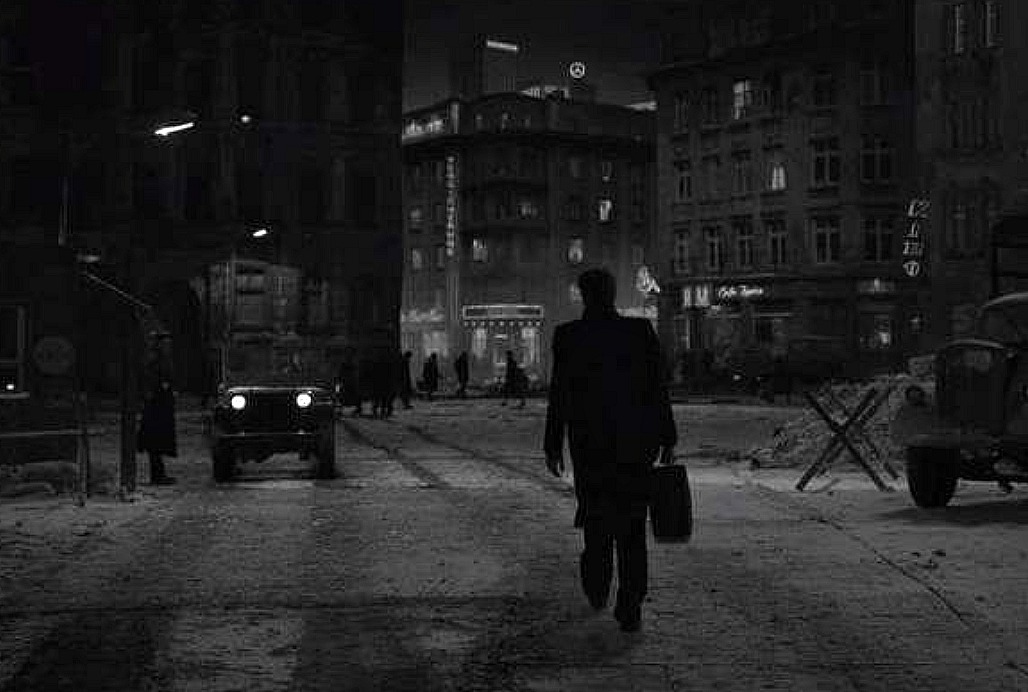Click here to skip the Sink In
You can’t watch Cold War and not fall in love with how it looks. If you have the slightest respect for what goes into exquisite composition, you can’t help but succumb. Those gleaming, whistle-clean silvery tones, Łukasz Żal‘s somewhat unusual bottom-heavy framings, that feeling of being in a repressive but exotic realm. It’s easily one of the most beautifully crafted films of the 21st Century, and yet it never feels ponderous or self-inflating or anything less than perfectly centered.
And now, 12 days before Oscar night, the winds seem to be favoring Cold War. Apparently. Seemingly.
The fact that Żal’s lensing took the top prize at last weekend’s ASC (American Society of Cinematographers) awards is highly significant. Think of it…a Polish-made, black-and-white, boxy-shaped smarthouse film beat the commanding palettes of Roma, A Star is Born, First Man and The Favourite.
Call it a late-inning surge, and I’m starting to think Cold War‘s momentum may spill over into the foreign language realm. Maybe.
HE’s long-held opinion is that Cold War deserves the Best Foreign Language Feature Oscar more than Alfonso Cuaron‘s Roma. Not because Roma isn’t a profound, deeply humanist, praise-worthy film but because it’s in The Big Game — a contender for the Best Picture Oscar. Roma may or may not win the Best Picture Oscar on 2.24 (who knows?), but it is what it is, and the Movie Godz are in awe.
But why, I’ve asked myself, does Cuaron’s intimate masterwork have to steal the foreign-language thunder from Cold War, which has earned worldwide praise and accolades since debuting at Cannes nine months ago?
Remember that Cold War won five awards at the the 31st European Film Awards last December — Best Film, Best Director, Best Screenwriter (Pawlikowski), Best Actress (Joanna Kulig) and Best Editor (Jarosław Kamiński). It also scooped up four BAFTA nominations, and Pawlikowski is Oscar-nominated for Best Director (unusual for a foreign language pic); ditto Zal for Best Cinematography.
On 5.19.18 I wrote that Cold War “is so perfectly composed, a masterwork on every level. Pawlikowski’s story-telling instincts couldn’t be more eloquent or understated. Every plot point is always conveyed in the most discreet and understated terms, but you’ll never miss a trick.
“And the economy! A story that spans 15 years is handled within 87 minutes, and yet you never sense you’re being rushed along.

“During my second viewing I sat in the third row of the Salle Deubssy, swooning once again to that velvety, needle-sharp, black-and-white cinematography and that boxy aspect ratio that’s been breaking my heart for decades. Every shot is so exquisitely framed and lighted that it brings tears to your eyes. You could blow up any frame from this film and hang it on the wall of any snooty Manhattan art gallery.
And I love how Zal, the film’s 37-year-old cinematographer, frames many of his shots with acres and acres of head room above the natural center of attention.
No other 2018 film rang my bell quite the same. I don’t care what category it’s in — no other film is as concise and self-aware, as visually glistening and fatalistic and bang on the money as Cold War. It’s pure silvery pleasure, perfectly distilled, the highest manifestation of luscious arthouse porn I’ve run into all year. And it offers the greatest female performance of the year — Joanna Kulig as the sly, at times insolent, sometimes half-crazy Zula.
I insisted all along that Kulig deserves a Best Actress nomination. She didn’t get there but history knows the truth of it. Her performance reignites the spirit of Jeanne Moreau in Jules and Jim (and if that doesn’t excite your spirit then I don’t know what) along with a spritz of early ’50s Gloria Grahame. A femme fatale songbird, an emotional force of nature, trouble from the word go.
In 2013 Business Insider‘s Kirsten Acuna reported that the average length of the ten highest-grossing films of the previous decade had gone from just under two hours to more than 130 minutes.
By these standards running times of 100 to 110 minutes are regarded as average or even fairly disciplined, and lengths of 90 to 100 are almost unheard of. Don’t even ask about films that run less than 90 minutes. For that kind of brevity you need to go back to the 1930s.
In this light Cold War is a small narrative miracle. For it tells a love story that spans something like 16 or 17 years, starting in 1949 Poland and moving on to Paris in the mid ’50s and ending in the early to mid ’60s (or something like that) and managing to deliver the kinds of textures and time passages — the kind that one might expect from a much longer and grander-scaled film — in a mere 88 minutes.
That’s brevity, son. It’s also an example of master-class filmmaking.













